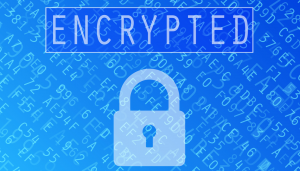While we on the Internet, we’re not generally simply clicking around to anything taking in any data, it’s all very simple to ignore data security, especially for a small organization. While bigger ones have IT departments, professionals, and hardware that costs them thousands, smaller companies mostly depends on online free software, which doesn’t have the same kind of “always secured” functionality.
But that doesn’t need mean that your data is so not important, or that it has always to be at high risk security.
Encryption is an amazing tool to keep important data secured—whether you’re sending it over the web, backing your data up on a certain server, or travelling with it to other country with your laptop. Encrypting your valuable data makes it totally coded to anyone but not for you or any sender you want to send the data to. Most of all, most of the software utilized in offices and on PCs already has encryption option built in naturally. You just need to know exactly where this option is.
Strong password=Strong encryption
Encryption mainly depends on password strength. Mostly encryption needs you to have a password, which enables you to hide data or to decrypt it when you need to see it again. If you utilize weak password, hackers can get into encrypted data and access all the hidden files.
A strong password must be not less than 10 characters, more is better. It also must include low case or uppercase letters, and maybe numbers and symbols too. Never think of passwords with letters only as something easy, kinds of passwords like this can still be secure if it’s too long; like 22 characters or more.
If you’re not certain about if your password is good enough to be secured, copy-paste it through Microsoft’s free password checker. Don’t you ever use a password less than the rate shown.
Ex.: “menoww”, run it through Microsoft’s free watchword checker
Secure your whole hard drive
You most likely as of now have a login pass for Windows on your PC, however that won’t really ensure your information on the off chance that some individual takes your PC or your hard, hackers can just connect your drive to another PC and access the information straightforwardly. On the off chance that you have loads of delicate data on your PC, you need to utilize full-circle encryption, which ensures all your information regardless of the fact that your equipment falls into the wrong hands.
Microsoft’s BitLocker programming makes setting up full-plate.
The simplest approach to check whether your PC has a TPM chip is basically to endeavor to empower BitLocker. Windows will fill you in as to whether you don’t have one.
Encode your USB drives
For full-circle encryption of drives and USB hard drives, you can utilize BitLocker To Go, which is intended for removable media. Regardless you require an expert or undertaking rendition of Windows, however you needn’t bother with a TPM to utilize BitLocker To Go.
You should simply connect to the data you need to encode, and go to the BitLocker menu. At the base of the menu, you’ll see the BitLocker To Go area, where you can click Turn on BitLocker for the data you want to encrypt.
Scramble your Internet movement
In some cases you need to encode your active and approaching Internet movement. In case you’re on an unsecured Wi-Fi system (at a cafe, for example), a programmer can catch the information flying out to and from your tablet, which may contain delicate data. To make that information futile to spies, you can encode it, utilizing a VPN.
VPN makes a protected “passage” to a trusted outsider server. Information sent through this passage (either to or from your PC) is encoded, so it’s safe. You can discover Web-based VPNs that charge a little month to month expense however give simple access, or you can set up your own or business VPN.
Get unlimited VPN trial here: http://www.unlimitvpn.com/unlimited-vpn-trial/#.VSIjK_nF8bU




